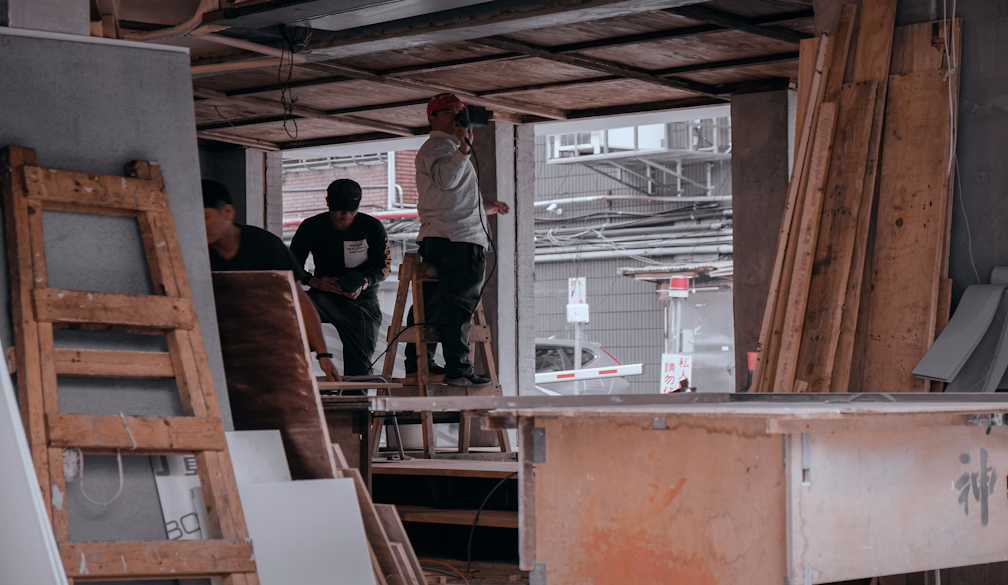Why Pre-Winter Building Inspections Matter in Melbourne

Getting a building inspection in Melbourne before winter sets in might not be the first thing on your to-do list—but it should be. Melbourne’s weather is famously unpredictable, and when winter hits, things can go downhill fast with heavy rains, cold winds, and damp conditions taking a toll on your property.
Whether you’re a homeowner, a potential buyer, or someone with an investment property, a pre-winter building inspection is the smart move. Here’s why it’s essential to ensure your property is in top shape before the chill sets in.
Why Pre-Winter Building Inspections Matter in Melbourne
1. Melbourne Winters Can Be Brutal on Buildings
Let’s face it, Melbourne winters aren’t just cold—they’re wet, windy, and wild. That means your property is going to be under pressure from the elements for a few months straight. Any small issue—like a cracked tile, a loose roof flashing, or a blocked gutter—can escalate into something much worse when it’s constantly exposed to rain and wind.
A pre-winter building inspection can help identify these vulnerabilities early, so you can take care of them before they become big, expensive problems. Fixing small leaks and drainage issues now will save you heaps of cash (and stress) when the rains come pouring down.
2. Avoid Costly Surprises
There’s nothing worse than waking up on a cold Melbourne morning to find your heater’s not working, your roof’s leaking, or your gutters are clogged. A building inspection covers all the important systems—like the roof, plumbing, heating, and insulation—so you’ll know the state of your home before the weather makes things worse.
Think of it as a winter health check for your home. Just like you would take your car to a mechanic before a big road trip, your house needs the same attention to ensure it’s ready for the cold months ahead.
3. Keeps Mould and Damp at Bay
Mould is a common issue in Melbourne homes during winter, and it’s more than just an eyesore—it’s a serious health concern. Damp conditions caused by leaks or poor ventilation can lead to mould growth, which thrives in cool, moist environments.
A pre-winter inspection will catch areas where moisture could sneak in, such as roof leaks, damaged seals around windows, or poor drainage around the property. Getting these issues sorted before winter means you can keep your home dry, warm, and safe from the harmful effects of mould.
4. Peace of Mind During the Stormy Season
Melbourne winters can bring intense storms, and there’s nothing worse than dealing with a major repair during a wild weather event. When you book a building inspection, you’ll have peace of mind knowing your home is in good shape.
Instead of worrying about your roof flying off or your basement flooding, you can relax knowing you’ve taken the necessary steps to prevent those worst-case scenarios. Getting in touch with a reliable local expert like ACE Building and Pest Inspection can make the process smooth and stress-free, giving you confidence that nothing’s been overlooked.
5. Ideal Time for Property Buyers
Are you looking to buy property in Melbourne? Then a pre-purchase building inspection is essential—especially if you’re eyeing homes in the older suburbs or areas prone to harsh weather. Melbourne’s real estate market can be competitive, and while properties might look great at first glance, they can have hidden issues that only a professional can identify.
A building inspection helps you understand what you’re really buying, including any potential maintenance costs down the line. If something major comes up—like a dodgy roof or faulty plumbing—you can negotiate a better price, ask the seller to make repairs, or walk away from the deal entirely.
6. Protects Investment Properties Too
If you own an investment property in Melbourne, a pre-winter inspection is a must. Tenants rely on you to provide a safe and habitable living space, and if something goes wrong during the winter months, you could be in for a heap of complaints and costly repairs.
A building inspection ensures your property is ready for the colder season and highlights areas that need attention before tenants move in—or before the weather does damage. From leaky roofs to faulty heating systems, a little maintenance now can prevent larger issues that could affect your tenants’ comfort (and your bottom line).
What Does a Pre-Winter Building Inspection Include?
A comprehensive pre-winter inspection typically covers:
- Roof condition (tiles, flashing, gutters, and downpipes)
- Insulation and ventilation in roof cavities
- Plumbing and drainage (checking for leaks and blockages)
- Foundation and subfloor moisture issues
- Windows and door seals
- Heating systems, chimneys, and exhaust vents
- External walls and fences for cracks or signs of water entry
Once the inspection is complete, you’ll receive a detailed report outlining any issues found and recommendations for repairs or maintenance. From there, you can decide which fixes need to be made urgently and which can be put off for a later date.
Final Thoughts
Winter in Melbourne can be tough on your property, but with a pre-winter building inspection, you can stay ahead of the game. Whether you’re living in the property, planning to buy, or managing an investment, knowing the condition of your home before the colder months arrive gives you the power to make informed decisions and avoid costly repairs down the track.
So, don’t wait for the first heavy downpour to find out what’s wrong with your place. Book a building inspection today, and rest easy knowing you’ve taken the right steps to keep your home warm, dry, and secure all winter long.










